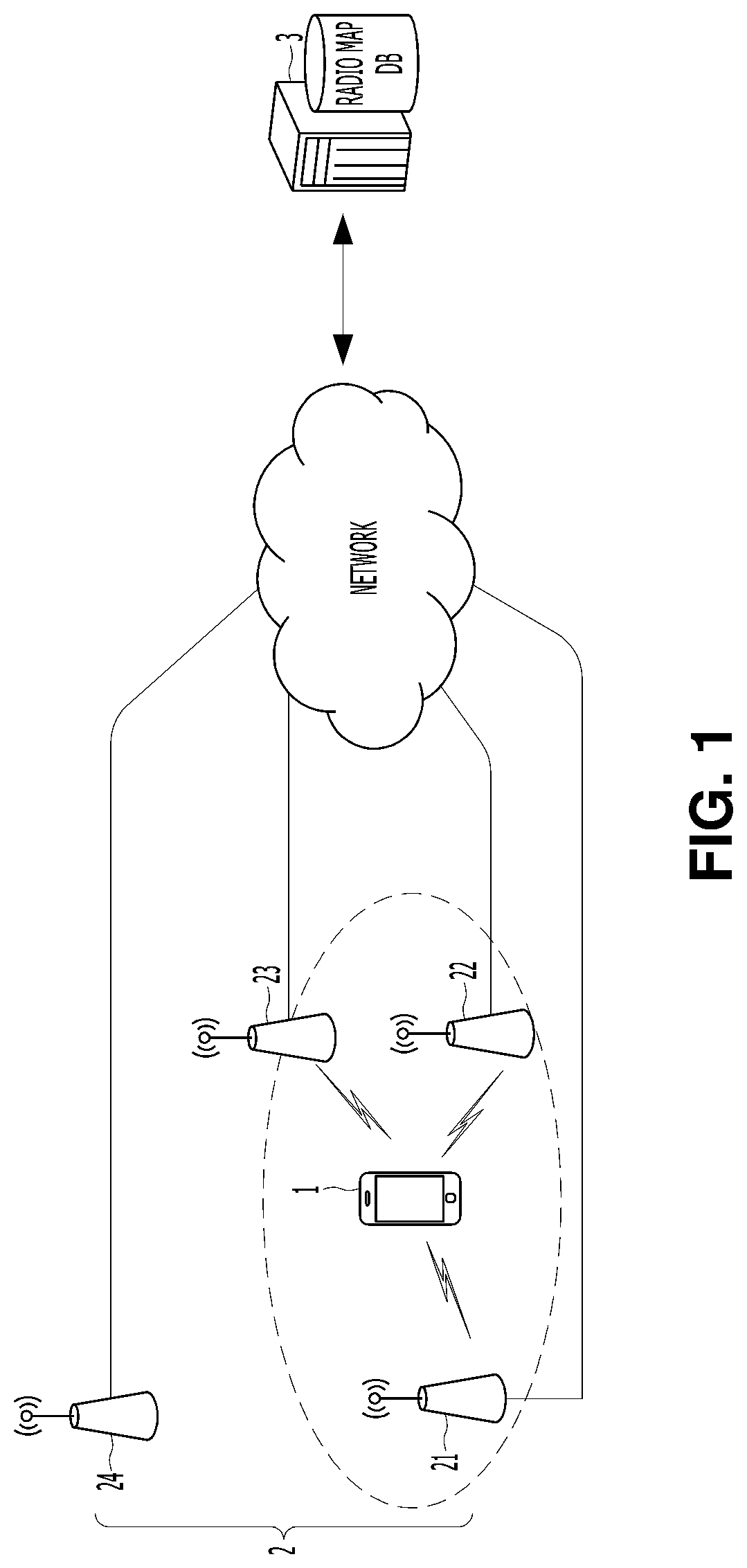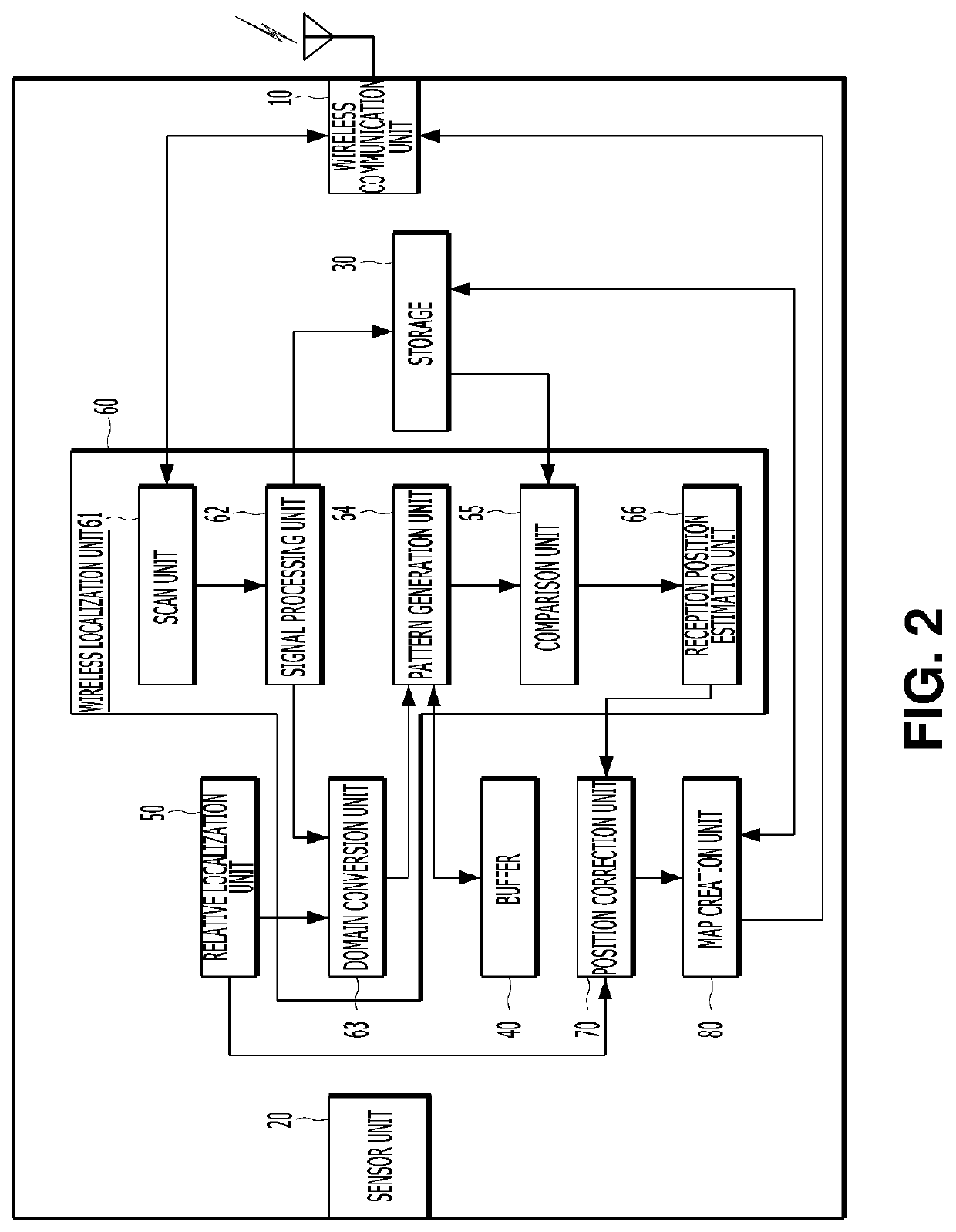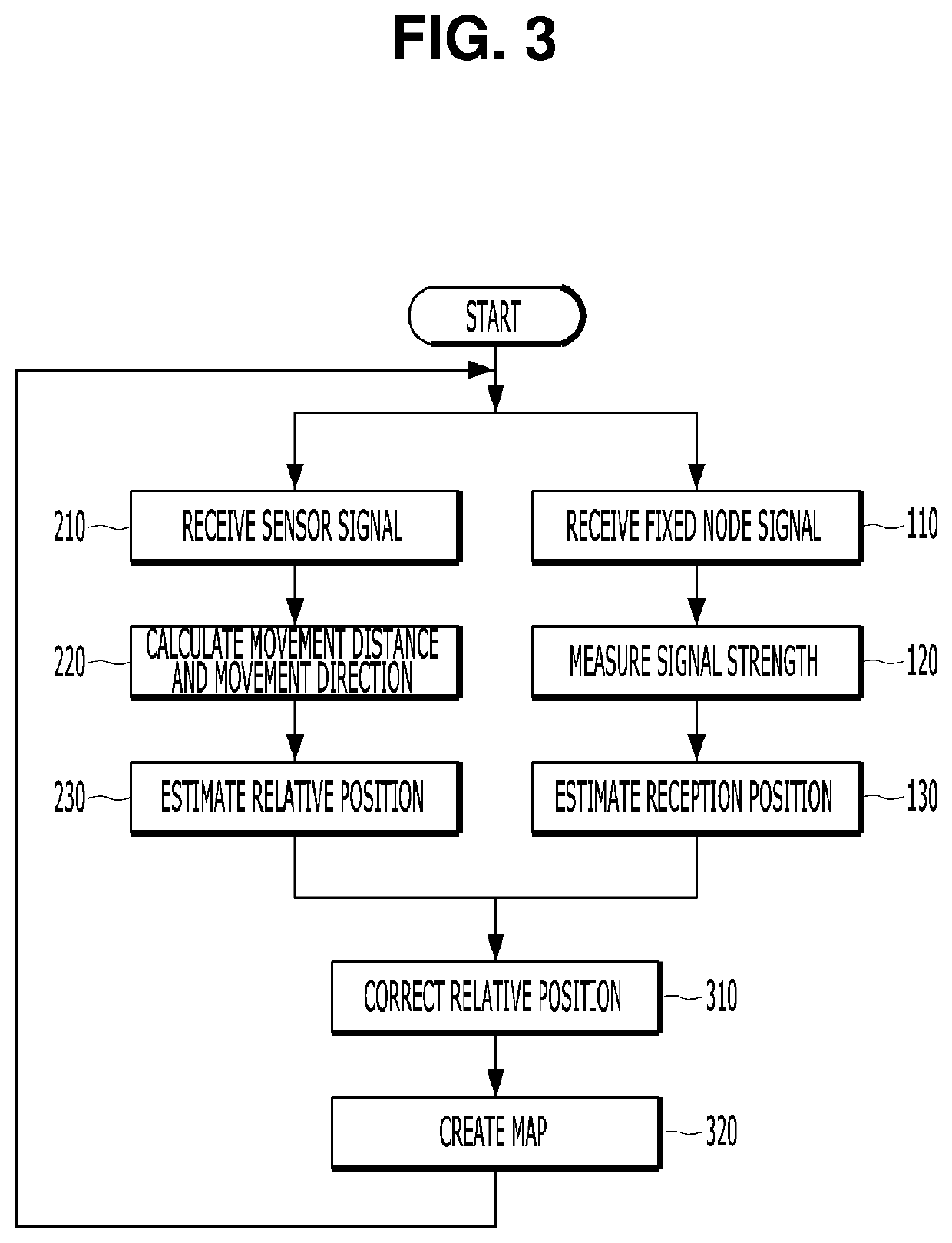Slam method and apparatus robust to wireless environment change
a wireless environment and wireless technology, applied in the field of slam methods and apparatuses, can solve the problems of low resolution, low resolution, and high cost of a very high resolution, and achieve the effect of accurately estimating reducing time and cost consumed in map creation, and accurate estimation of the position of the moving nod
- Summary
- Abstract
- Description
- Claims
- Application Information
AI Technical Summary
Benefits of technology
Problems solved by technology
Method used
Image
Examples
Embodiment Construction
[0048]Hereinafter, embodiments of the present invention will be described in detail with reference to the drawings. Hereinafter, all moving objects, which are localization targets, such as a smartphone carried by a user, a navigation system mounted on a vehicle, and a moving robot that moves by itself as an independent object will be collectively referred to as a moving node. In addition, communication devices, which are fixedly installed in regions and relay wireless communication of a moving node, such as an access point (AP) of a WiFi network and a base station of an LTE network, will be collectively referred to as a “fixed node”. In addition, a radio frequency (RF) signal transmitted from the fixed node will be briefly referred to as a “signal”.
[0049]An embodiment of the present invention that will be described below relates to simultaneous localization and mapping (SLAM) method and apparatus which can estimate a position of a moving node in an unknown environment and create a m...
PUM
 Login to View More
Login to View More Abstract
Description
Claims
Application Information
 Login to View More
Login to View More - R&D
- Intellectual Property
- Life Sciences
- Materials
- Tech Scout
- Unparalleled Data Quality
- Higher Quality Content
- 60% Fewer Hallucinations
Browse by: Latest US Patents, China's latest patents, Technical Efficacy Thesaurus, Application Domain, Technology Topic, Popular Technical Reports.
© 2025 PatSnap. All rights reserved.Legal|Privacy policy|Modern Slavery Act Transparency Statement|Sitemap|About US| Contact US: help@patsnap.com



